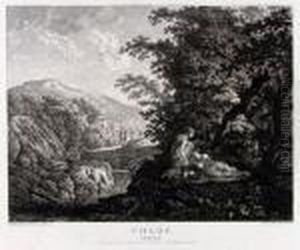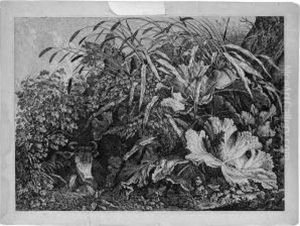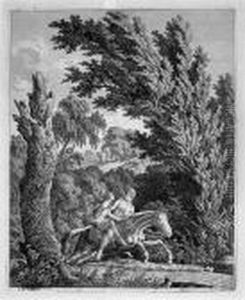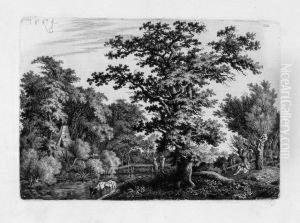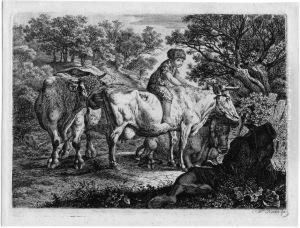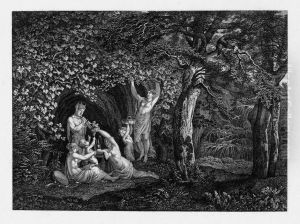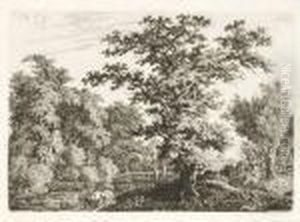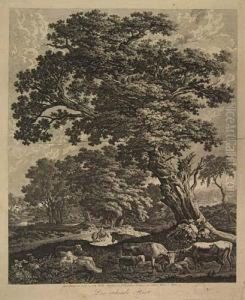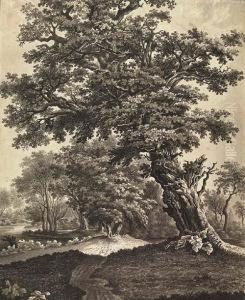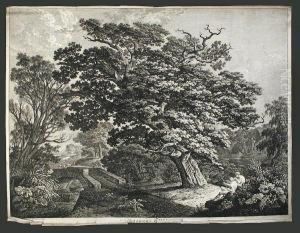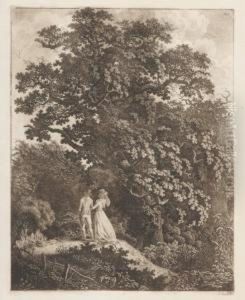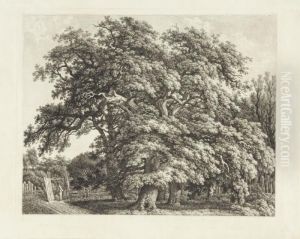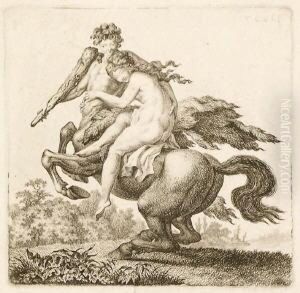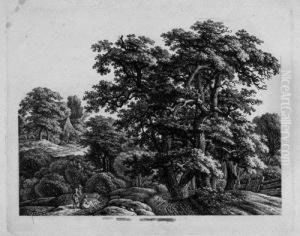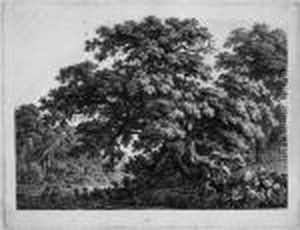Carl Wilhelm Kolbe Paintings
Carl Wilhelm Kolbe, born in Berlin in 1759, was a German artist and etcher who left a significant mark on the art world with his distinctive style and contributions. He embarked on his artistic journey at a young age, developing a keen interest in the arts that would shape his entire career. Kolbe's education and early career were influenced by the cultural vibrancy of Berlin, a city that was becoming a center for artistic innovation and intellectual exchange during his formative years.
Kolbe is best known for his etchings that often depicted landscapes and scenes inspired by nature, characterized by intricate detail and a romantic sensibility that was becoming increasingly popular at the time. His works are distinguished by their elaborate portrayal of foliage, trees, and pastoral scenes, which not only reflected his deep appreciation of nature but also his mastery in capturing its essence on paper. This unique style earned him the nickname 'Kolbe the Elder' to distinguish him from his nephew, Carl Wilhelm Kolbe the Younger, who was also an artist.
Throughout his career, Kolbe was influenced by the Sturm und Drang movement, which emphasized intense emotion and individualism, themes that are evident in his works. Despite the romantic idealism that pervaded his art, Kolbe's etchings also display a remarkable attention to detail and realism, a testament to his technical skill and observational powers.
Kolbe's contributions to the art world were not limited to his etchings. He was also a respected art teacher and held a position at the Dessau Anhaltische Gemäldegalerie, where he influenced a generation of artists. His legacy, however, is most enduringly captured in his etchings, which continue to be appreciated for their beauty and technical precision.
Carl Wilhelm Kolbe died in 1835 in Dessau. His work remains significant in the study of German Romantic art, representing a bridge between the neoclassical and romantic movements. Kolbe's etchings, with their intricate details and evocative portrayal of nature, continue to captivate art lovers and collectors, securing his place in the annals of art history.


